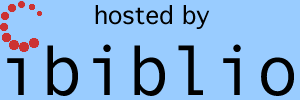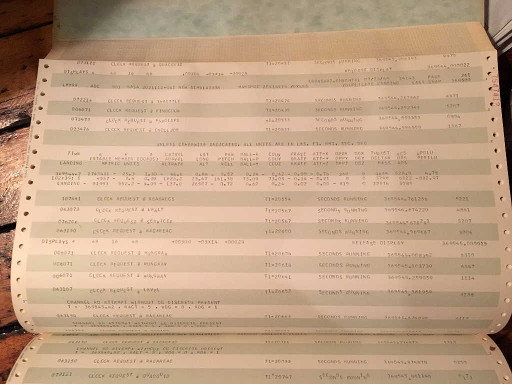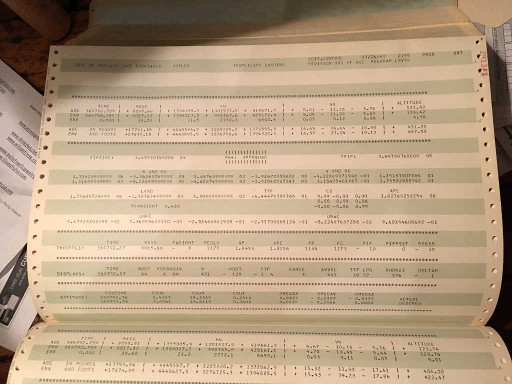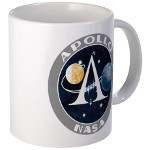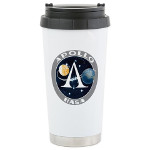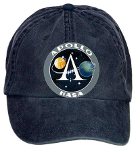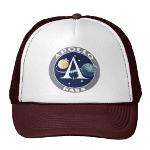Useful Areas of Involvement in General
This is not an exclusive list, I suppose. If you have a notion
that doesn't fall into any of these categories, you can contact me
directly.
A Unique
Time-Limited Opportunity to Help (Now Fully
Subscribed!)
This current opportunity has now come to an end, so you've lost
out, alas! However, I'm so in love with my own words that
I'll let the description persist for a while, and you can read it
below. With luck, more such opportunities may present
themselves in the future.
Scan, Baby, Scan!
Most of this web-page covers things you can do to help in a very
general way, but it so happens that right now there is a
very specific way in which we'd like to get your help.
Right now, a very large (by our standards) set of very rare
AGC-related material has become available to us from the personal
keepsakes of Hugh Blair-Smith and Don Eyles, who were among the
original developers of the AGC. Some of you may recall Don
Eyles as the hero programmer of Apollo 14. That story has
been told and retold many places on the web, so I won't repeat it
here, but for example, there's
a Rolling Stone article about it.
To acquire this material and present it here online, however, it
must be scanned, and scanning costs money, and that's where we'd
like your help.
No, don't send us money, please! The materials will be
scanned by archive.org, and
anybody who is kind enough to help out will be billed directly by
archive.org after the scanning takes place.
What we are looking for, for each one of the documents we need to
scan, is a "sponsor" who will commit to paying for that
scanning. So what we'd like for you to do is to choose which
particular document you'd like to sponsor, from the list in the
next section, and to drop me an email (Ron Burkey
<info@sandroid.org>) with your name, physical address, and
telephone number. If two or more people want the same
document, the first email I receive wins it, so if you have a
second choice, include that in the email. I'll fill out the
paperwork for archive.org, and we'll keep you apprised of the
progress.
The amount you can expect to pay is $3 plus $0.25/page, so the
list in the next section includes page counts to help you figure
out the total. If you are not in the U.S., that is fine with
archive.org as long as your email address is valid.
The Document List
Here's the list of documents we are trying to acquire.
You'll notice that some of them already have sponsors, and indeed,
some of them have already been scanned. Don't choose one of
those. Incidentally, after the documents are scanned,
archive.org will continue to host them online at quite a high
resolution, and you can examine our Virtual
AGC "collection" of documents at archive.org to better
understand what you're helping to accomplish.
Document Name
| Page Count
| Description
| Sponsor/Scan
|
|---|
AURORA 12
| 760
| A very early version of the Lunar Module
software, prior to any flown missions. It is very
important for us, because it is the last version of
AGC software to contain the complete test suite that have
been developed to check out the CPU and other aspects of the
spacecraft. It is thus invaluable for validating the
correct behavior of AGC simulators.
| Mike Stewart (already
scanned)
|
YUL
| 730
| The source code for the original AGC
assembler program used in converting AGC software source
code into "rope memories" for use in the actual AGC.
| Ron Burkey (already
scanned)
|
RETREAD 44
| 304
| The earliest version of the Lunar Module
software, prior even to the AURORA 12 software mentioned
above. Actually, this is the earliest version of AGC
software of any kind (CM or LM, Block I or Block II) that we
presently have any prospect of getting, by more than a year
compared to the closest contender.
| Mike Higgins (already
scanned)
|
SUNBURST 120
| 1284
| The software for the unmanned Apollo 5
mission.
| Mike Stewart (already
scanned)
|
SHEPATIN (SUNBURST 37)
| 1223
| An earlier version of the SUNBURST 120
software mentioned above. This is interesting because,
while it isn't flown software, it's our first chance to see
significant development within a single AGC program, namely
SUNBURST ... and I'm told that the development between
SUNBURST 37 and 130 was indeed quite significant.
| Peter McDermott
(already scanned)
|
LUMINARY 69
|
| Lunar Module software for Apollo 10
| Onno Hommes
(already scanned)
|
1969 Digital Simulation of Apollo 11 landing
| 994
|
| Matthew
Fite
(already scanned)
|
1971 Digital Simulation of Apollo 11 landing
| 759
|
| Fabrizio Bernardini
(already scanned)
|
LUMINARY 116
|
| Lunar Module software for Apollo 12
| Ron Burkey
(already scanned)
|
LUMINARY 131
| 1735
| Lunar Module software for Apollo 13.
This is, in principle, something we've already had for many
years, and is already online many places on the web,
including at this site. However, the version which has
been available these many years was digitally mutilated
by an OCR process and the original high-quality scans
discarded. Consequently, the available scans are
barely readable. This would be a new, clean,
unmutilated scan. A similar thing happened with the
Colossus 249 (Apollo 9 Command Module) scans that have been
available in mutilated form for many years: they were
eventually replaced by a clean, legible scan. That's
actually a factor, because our current tools for
proofing/correcting program comments (which tend to have
thousands of errors in any given program version if merely
proof-read in a normal fashion by people) depend on a nice,
clean scan, and thus our existing transcription of Luminary
131 source code is bound to be riddled with them!
| Ron Burkey
(already scanned)
|
ZERLINA 56
| 1735
| Don Eyles offers this explanation:
"ZERLINA was my personal non-flight testbed for developing
new capabilities, some of which later moved to the main line
LUMINARY. Its main feature was a new version of the Servicer
job in which the guidance period was allowed to stretch
beyond the nominal 2 seconds — part of the overall effort in
response to the CPU overload on 11. Variable Servicer would
have been necessary if new capability was required that
would have further reduced our CPU margin, such as something
called P66 LPD, also implemented in ZERLINA, based on an
idea of John Young's, that would have facilitated making
very accurate landings. This capability is described in
Draper Lab report E-2581, which I can at some point make
available. Neither Variable Servicer nor P66 LPD was ever
approved for LUMINARY. Things developed first in ZERLINA
that DID make the jump to LUMINARY included the a priori
terrain model (needed to land in more mountainous terrain),
and also a new version of the "landing analog displays," the
same mentioned in the Tindallgram of July 24, 1970. In my
view ZERLINA 56 still represents the state of the art for
manned landings on the Moon." Paul Fjeld has also told
me, although Don doesn't mention it, that John Young also
worked with this in the LM simulator.
By the way,
LUMINARY Memo #138 describes what Don was doing with
the Variable Servicer, which (among other things) eliminated
the infamous 1201 and 1202 alarms. At the very least,
the memo is a very funny read, and very short.
| Linden Sims
(already scanned)
|
Digital Simulation of ZERLINA lunar landing
| 395
| A simulation of ZERLINA would be particularly
interesting, because since ZERLINA was intended to improve
the landing process, the simulation is what would show
whether or not that was true!
| Niklas
Beug and Alex Bart
(already scanned)
|
LUMINARY 210
|
| Lunar Module software for Apollo 15-17.
| Jim Lawton (already
scanned)
|
Digital Simulation of Apollo 17 landing
| 628
|
| Fabrizio Bernardini
(already scanned)
|
Digital Simulation of Apollo 12 landing
| 805
|
| Matthew Fite
(already
scanned)
|
LUMINARY 99
| 1750
| Lunar Module software for Apollo 11.
Now, we already have a digitized version of LUMINARY 99 from
the MIT Museum, so why do we need another one? Well,
while I can't claim dire necessity, I'll point out that:
- This would be a higher-quality digitization than our
previous one.
- That it would have whatever hand-written notes Don
Eyles had chosen to scrawl in it.
- That a page or so was actually missing from our
original copy, and this printout has that
material. (Though, admittedly, we had already
reconstructed it long ago from LUMINARY 131, and that
Don has since sent us snapshots of the relevant pages,
and it turns out to be 100% identical with what we had
already reconstructed.)
- We will probably be able to use it to get rid of a few
typos in our existing transcription of Luminary 99 that
continue to linger even though considerable effort has
been put into eliminating them in recent months.
The printout is interesting, in that rather than being
called LMY99 BY NASA as our 1969 version is, it is called
AP11ROPE BY EYLES and is from late 1970. However, we
already know that the memory-bank checksums are identical,
so there's every reason to believe (though no guarantee)
that the entire contents are identical as well. I'm
not quite sure why Don has it, but my guess is that it's
the companion to the 1971 digital simulation listed above;
I suspect that Don wanted compare the behavior of ZERLINA
to the Apollo 11 baseline, since some of the changes
test-bedded in ZERLINA were targeted at eliminating the
CPU overloads which triggered the infamous 1201 and 1202
alarms.
At the very least, it's a nice piece of Americana, and if
you want to sponsor it, you can brag that you helped pay
for the Apollo 11 lunar lander software!
| Vipin Rathor
(already scanned)
|
AC Delco LM manual, volume 1
| 550
|
| Fabrizio Bernardini
(already scanned)
|
AC Delco LM manual, volume 2
| 550
|
| Mike Stewart
(already scanned)
|
There are also other possible sources on the horizon, which may
or may not materialize within the time-frame of this special
offer.
In case you wonder what a "digital simulation" is, we did too, so
Don Eyles has also given us a pretty detailed description:
"I'm not sure why I saved all these simulations. These
days I guess their chief value would be to anyone actually
trying to run a simulation of an Apollo descent.
"They consist of two parts, the sim itself, and an "edit" of
raw data dumped during the sim onto a MARSROT tape. The sim
part consists of some pages of initialization data, then the
run itself. The printout includes astronaut inputs, DSKY
displays, lines called "clocks" that are printed when the code
passes through certain locations, and for every two seconds of
simulated time a three-line summary of data from the
simulation environment including the current position,
velocity, attitude, etc., etc. The edit portion includes
additional sim and AGC data, also printed at two-second
intervals. I'll attach photos of the sim and edit parts of the
APOLLO 11 LANDING run."
What's In It For Me (by which I mean you)?
Well, you'll have the satisfaction of knowing that you did a good
thing, and your name will be permanently enshrined as a sponsor
(assuming you want it to be so enshrined) both at this website,
and in our archive.org collection!
Not enough for you? Well, to express my thanks, if you
sponsor the scanning of one of these documents, I'll personally
buy you a thank-you gift, as follows:
- Sponsor a document of 100 or more pages: you get an
Apollo coffee mug.
- Sponsor a document of 500 or more pages: you get an
Apollo ball cap.
- Sponsor a document of 1000 or more pages: you get an
Apollo tee shirt.
And so as to be fair, if you sponsor multiple smaller documents,
you can add the pages counts together to go to the next higher
gift category, if you like. Or if you offered to sponsor a
larger document and it had become unavailable so that you had to
accept your second choice, which was smaller, it was your original
good intention that determines your gift category. Of
course, you can optionally choose a lower gift category, or no
gift at all (that works for me!).
After the scans are complete, and you've paid archive.org, I'll
get you the exact details and get your choices (style, size,
color, etc.), but you'll have a choice of some reasonable
variation of the following:
I Don't Want to Pay, But I Still Want to Help (again, you)!
Well, as you may be aware, what we do with AGC software
that comes to us in the form of program listings or scanned
program listings is to
- Transcribe the source code into the form of files which can be
"assembled" to create an executable memory "rope".
- Provide the source-code files and the "rope" to the public, so
that the program can be run in an AGC simulator.
We talk more about how to do that below, but there are no
"gimmes" associated with it, sorry!
Okay, so that's the end of the special offer. If you want
to continue reading the general description of what we need, then
by all means proceed to the next section!
Information
First and foremost, Virtual AGC is about providing AGC/AGS related
documentation that cannot (or at least, previously could not) be
found elsewhere online. Examples of items that will always be
in demand are these:
- Legible scans or page-by-page digital photographs of assembly listings for any
Apollo software versions not already on this site. These
do not have to be listings from actual missions, and could be
intermediate versions. By an "assembly listing", I mean a
printout showing assembly-language source code and the binary to
which that source code reduces upon assembly.
- Scans of any original Apollo documents not already available here at Virtual AGC or elsewhere.
Of particular value would be software patches applied at
runtime, software problems reports, mission checklists, and
detailed technical documentation of hardware interfaced to the
AGC. Click here for hints of
where to find such documentation.
- Or even information
about where such material resides, such as "Museum XYZ has a
listing of Luminary 1D".
If you have such material, you'll probably want to contact me
directly to determine that we don't already have that item in
process, to discuss methods of preparation, to discuss means of
delivery to me, etc. These days, what we prefer to do is to
have the item scanned at some local outpost of archive.org; but
there are only a handful of these around the country (Boston,
Washington, and so on), so it's not always applicable. There's
also a pretty-complete description of all the other available
options on our "how to digitize" page.
When you contact me, a page or two of scanned or
digitally-photographed images (including the title page) attached to
the email might be useful.
Wiki
If you have AGC/AGS information other than original Apollo documents
you'd like to make publicly available, you could do so by contacting
me directly. But in some cases you may find a better and more
straightforward approach may be to contribute
your knowledge to the wiki. Examples of things that are
useful are theoretical discussions, historical information or
anecdotes, tutorials on how to perform certain tasks with the AGC or
AGS, etc.
Coding
If you have a simple bug-fix, it might be easiest to submit a patch
directly to me. Please be sure to tell me when you do so which
development snapshot or which subversion revision you started from.
For more extensive coding, we have a code repository
at GitHub and if you have ideas for new features then you can
contribute them to the project via the repository.
Some particular sore spots which could be addressed by an ambitious
coder include:
- Fixing the yaAGS
program so that it can interpret downlink telemetry streams
emitted from the yaAGC
program in order to update LM state vectors.
- Fixing yaAGS so that
its downlink telemetry streams work.
- Fixing yaTelemetry
(or providing a supplemental program) to display yaAGS downlink telemetry.
- Adding an IMU simulation program.
- Adding an FDAI simulation program.
- Adding an AOT simulation program.
- Working out the details of using the hand-controller
simulations (yaACA, yaACA2, yaACA3) and/or IMU in the
Command Module.
- Adding simulated peripheral devices for the AGS.
- Addition of more control-panel visual realism. (For
example, control panels that look like control panels, with
switches that look like switches, in proper locations, rather
switches that look like GUI push-button widgets, located
wherever is convenient.)
- Integrating Virtual AGC into an existing open-source
spacecraft simulator program.
While the excellent LM-Simulator
contributed program by Stephan Hotto already provides a simulated
IMU and FDAI, it has a couple of drawbacks in that it is written in
the Tcl/Tk interpreted
language, and that it is closely tailored to the LM (making it only
of limited value for the CM). The fact that it is in Tcl/Tk makes it relatively slow,
and almost unusable on slower computers. Of course, as time
goes on and computers become faster and faster, this becomes less of
a concern. The unusability with the CM will remain a
concern. One possibility is to simply update LM-Simulator itself.
Another is to convert it to C/C++. Still another is to replace
it with IMU/FDAI workalikes. Any such effort, other than the
latter, would preferably be coordinated with Stephan rather than
being done unilaterally without his knowledge.
More generally, while we will likely accept any useful code that is
supplied, you should keep the following suggested guidelines in
mind:
- All programs are cross-platform, with the minimum acceptable
list of supported platforms being Linux, Windows XP, and Mac OS
X 10.4 (and later).
- Only open-source development tools are used.
- Non-GUI programs are preferentially written in C.
- GUI programs are preferentially created using the wxWidgets toolkit, in the C++ language.
- The compilers used are gcc
and g++ (or MinGW
in Windows).
- The code-formatting style used is the
GNU style. This doesn't necessarily mean you have to
change all of your coding habits, as there is a handy program
called indent readily
available on most Linux systems and Mac OS X that will reformat
C/C++ source files into this style. It is also available
for Windows.
- Primary code development is done in Linux, which means that
UNIX-style line endings ("\n") are used in preference to Windows
line endings ("\r\n") or Mac endings ("\r"). While this is
not a problem for gcc,
it may be a problem for your source-code editing software.
- You retain the copyright for the code you write, but you are
expected to license it under the terms of the GNU GPL version
2. The license text within the source files should quote
the license as "GPL version 2 or later".
It should be noted that making choices other than these is likely to
make inclusion of your code into Virtual AGC binary installer
packages impractical, and that such omission is likely to greatly
reduce the number of people actually using your code.
For a more-technical view of the operation of Virtual AGC code and
what it might take to supply code, please visit the developer page.
Money
If there is a specific need, such as for paying scanning expenses, a
notice will appear at the top of this page. However, in
general, Virtual AGC is a non-commercial project in the public
interest, has never accepted monetary donations in the past, and has
no mechanism for doing so in the future. The web hosting for
the project is done by other organizations in the public interest,
notably ibiblio.org and archive.org.
Code
Transcription or Proofing
This is an area where no technical expertise is required for
participation, particularly in proofing.
A situation arises from time-to-time in which AGC assembly-listings
have been received and require transcription into machine-readable
form for integration into Virtual AGC. Such conversion tasks
are rather overwhelming when done by a single individual, but these
days such conversions are performed by teams of volunteers, which
make the work much lighter. There is a certain pleasure
involved in participating in such a conversion, because you can know
that you are helping to make available for actual use code which has
not seen the light of day for 40 years. So volunteer
assistance is welcomed in these cases.
Code transcription
from page images to source-code files
If there are any transcription efforts in progress, you will see
them as "issues"
in our GitHub repository, typically with a HELP WANTED icon
attached to them. Simply add a comment to one of those issues
asking for it to be assigned to you and wait for an
acknowledgement. If you are a newby to this process, say so
and ask for further instructions.
Code transcription is a process wherein we take the scanned or
photographed images of a hardcopy listing of an AGC program,
and convert it to source code (text files) that can be processed to
created the executable software which runs on the simulated AGC
CPU. It is not necessary to understand AGC assembly language,
or any computer language, to do this; but if you are somewhat
familiar already with the AGC programs, you will be awarded with
some small thrills along the way.
Here is a basic outline of the conversion process:
- The AGC source code is divided into a sequence of well-defined
modules (often called "log sections"), with names such as
INTERPRETER or IMU MODE SWITCHING ROUTINES. As mentioned
above, request an assignment for a specific one of these by
using its associated GitHub "issue".
- A starting point for the transcription of your assigned module
will already exist in the GibHub repository. At the very
least it will have a file-header describing what's in the file,
and often will appear to contain the actual code. You see,
the AGC code does not change much from mission to mission, or
from spacecraft to spacecraft. (For example, the software
for Apollo 11 fairly similar to the software for Apollo 13, and
the software for the CM is likely to be similar in many respects
to the software for the LM.) Therefore, often, the
appropriate transcription technique is to start from existing source code from a
different mission or spacecraft, and then to simply make
whatever changes are needed.
- Download
or examine online the appropriate scans of the assembly
listings being converted.
- Make whatever changes are necessary for the file to conform to
the scanned assembly listing. If some thing it is wrong,
fix it! (Don't just make a note saying it's
different; we don't care that it's different; we just want it to
be right.) Note certain differences between the scans and
the textual source-code files (referring to the picture below):
- In the scans, "comments" begin with a special character such
as 'R' or 'P' or 'A' in the first column, or simply appear on
the right-hand side of the page, following the actual code
without any special marking to distinguish them. In the
Virtual AGC source-code files, however, they should be
preceded by the '#' character.
- In the scans, each line begins with several columns that are
not part of the source-code itself and are instead produced by
the action of converting the source code to binary executable
code. These columns are omitted in the source-code files being
created.
- Each line of source code begins with an optional location
label of up to 8 characters in length, followed by an optional
machine-language "opcode", followed by one or two optional
parameters, followed by optional "comments". In the
source-code files being created, we prefer to have tab-stops
that are 8-spaces wide, and for the optional label to begin at
the left-hand margin, the opcode to begin at the 2nd tab stop
(i.e., 16 spaces in), and for each of the other fields to
begin at the next succeeding tab stop. It doesn't really
matter where comments are aligned, except that it's nice if
they all line up at the same tab stop within any given file.
- Each time you move from one scanned page to the next, put in
a comment giving the page number (from the upper right-hand
corner of the scan), such as "## Page 292". This helps
you or other people when finding or fixing errors. Note
this format: two #-signs, a space, "Page"
(capitalized in precisely that fashion), another space, and
then a number; that's all. If you do it differently,
somebody else will need to correct it later, so don't.
- All AGC source code uses all-capital letters. You may
feel the need to add comments of your own, in order to
describe markings on the page, to make your own explanations
of what's going on in the code, or whatever. Any
comments you add to the code yourself can be in
lower-case or mixed upper/lower case to distinguish them, and
you might want to mark them with the date or something.
Indeed, you should add comments for any unusual
condition, such as missing or garbled code. But your
comments must follow these rules:
- Use two ##-signs in front of your own comments.
- Align your comment at column 1 ... i.e., at the left
margin.
- These ##-style comments may be plain text, but they are
treated as simple HTML. What that means is that
successive adjacent ##-style comments will by default be
joined into a single continuous line. If you want
line-breaks at specific points, use HTML <br> tags or
<pre> tags.
- Don't hesitate to ask, if you have questions ... do this by
commenting in the GitHub issue you're working on.
Sometimes you will encounter areas in a program listing which are
too garbled to read, or indeed simply missing entirely.
Don't panic! Simply mark them with ##-style comments and
continue. These program listings have enough redundancy and
commonality with other versions of the program that (at least so
far) we can always reverse-engineer them to repair such problems,
though the techniques are too intricate to detail here.
Finally, and perhaps most importantly, you'll will see many
things which are obviously wrong, and which you will be tempted to
"fix". Don't do it! Our standard is 100% agreement
with the original program listing, so if you "correct" (say) WTIH
to WITH or TEH to THE, you're simply forcing somebody else to come
back and undo your fix later.
In the following pictures, some of the points mentioned above are
illustrated using the first page of the SERVICER module of AGC
program Luminary 131. (It is perhaps worth pointing out that
according to the scan, this is page 852, while according to the
converted source-code file it is page 857. This is because the
Luminary 131 page images were originally supplied as a PDF file in
which the page numbering within the PDF file did not exactly match
the markings on the pages themselves. I hope to avoid this
kind of discrepancy in future conversions.)
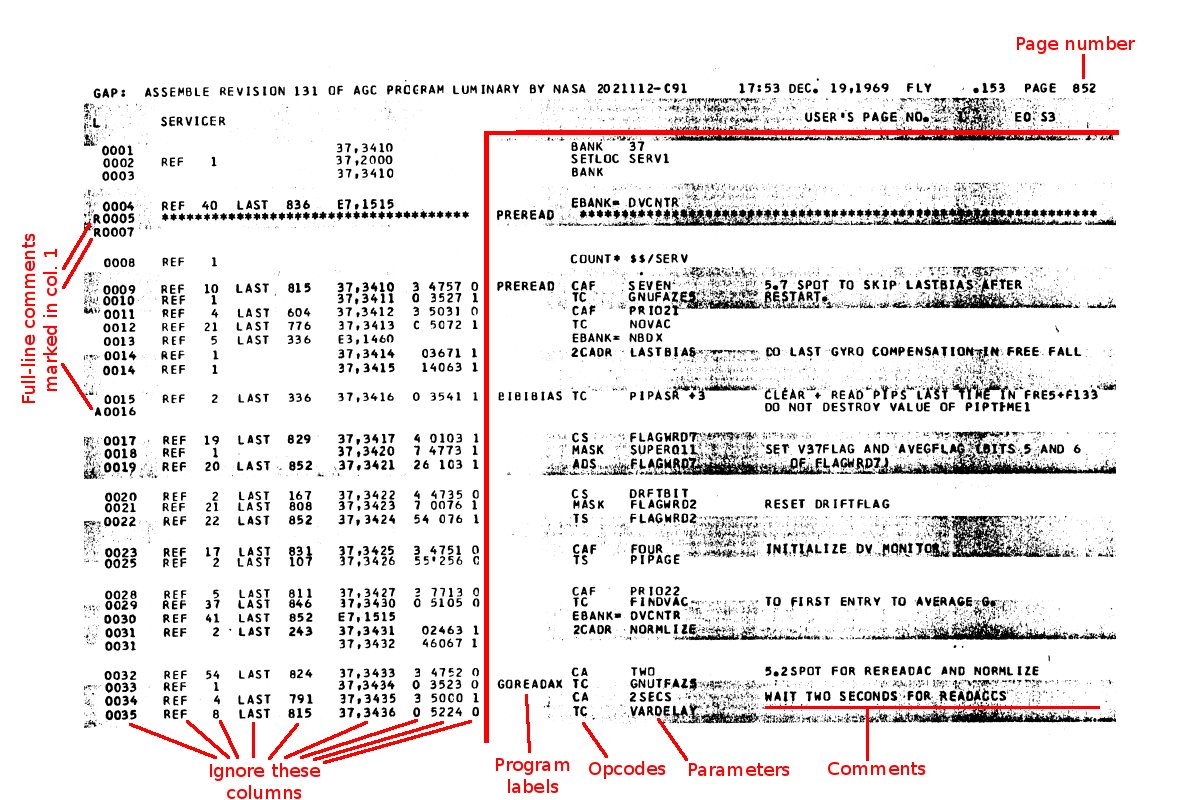
Before
| 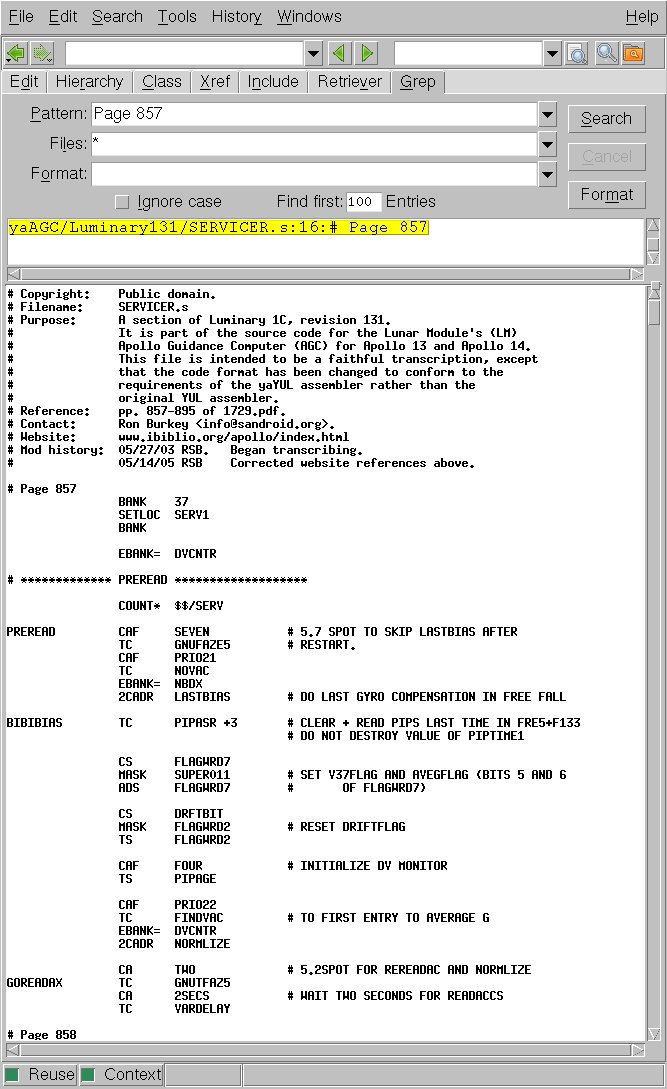
After
|
Make every effort to eliminate error, but take comfort in the fact
that we have means of detecting and correcting errors, and thus you
don't need to lose sleep about them. However, the more errors
there are, the more of a pain it is to do so, so don't let that be
an excuse for doing less than your best.
Proofing of
comments in source-code files
After the code-conversion activities described in the preceding
sections, we have a reasonable assurance that the program code is
100% correct—i.e., that the AGC program will execute properly unless
there is a bug in the AGC CPU simulator itself. However, we
also have good reason to believe from past experience that the
program comments still have many errors. Normally, computer
programmers treat program comments as an afterthought, and don't
worry too much about them as long as the code itself is
correct. But when trying to understand very old code such as
the AGC programs, the program comments are very important.
Therefore, an extra effort is associated with making sure comment
text is proof-read and corrected.
We don't actually need any special help with this at the present
time, but if you have any inclination to compare the comments in our
GitHub AGC source code to the scanned program listings, please
do! If you happen to find an error, note that the AGC code
changes gradually from version to version, so the error you find may
exist in some or all of the other AGC versions as well. In
other words, if you're careful, you might be able to kill 10-15
birds with one stone!
"Normal" Manual-Proofing Procedure
If you want to help in proofing comments in existing source files
for the problematic AGC versions listed above, here are the
instructions for doing so, you simply have to compare the scanned
program listing and the source-code files side-by-side.
Specific instructions are TBD.
Advanced Manual-Proofing Technique
If you have the appropriate software to do so, there is a quick
technique by which comment fixes that have been made in the past for
one type of spacecraft or mission can be ported to the source code
for other spacecraft or missions. This is so because of the
way the source-code files have been created. We started with
the source code for one mission, then modified it (via the "code
conversion" technique described earlier) for another mission, then
modified those files for still other missions. Each time the
code was modified, some comment-fixes may have been made, but
probably were not back-ported to earlier source-code files. So
if we compare the
corresponding source code for different missions, we can easily
pinpoint where some corrections can be made. While this
doesn't find all of the broken comments, it can help to find a lot
of them with reduced effort by leveraging work that others have
already done.
For example, the Luminary 131 (Apollo 13 LM) source code hasn't
really had its comment-text proofed, but we'd suppose that it was
probably very similar to the Luminary 99 (Apollo 11 LM) source code.
Fortunately, there are automated techniques for locating such
differences, but you need the appropriate software to do so.
On Linux, I use a (free) tool called kompare for this, but
there are any number of such tools for different computer
platforms that may be suitable. Similar programs which
can be had for free on Windows and Mac OS X are WinMerge and FileMerge, respectively.
I'll simply illustrate the technique using kompare. If I run kompare
on Luminary099/INTERPRETER.s and Luminary131/INTERPRETER.s (as of
2009-06-20), an excerpt of the comparison is seen below.
(Click to enlarge if it's hard to read.)
A number of differences are immediately apparent:
- At lines 189 and 193 (using the numbers from the left-hand
pane), we see page number differences. These are perfectly
appropriate since the code does appear on different pages in
these two versions of the AGC code.
- At lines 182, 220, and 224, we see some code (rather than
comment) differences, but actually, this is a case in which the
change might be profitably ported over from one file to the
other. The difference is that a space has been changed to
a tab, and while this difference is unimportant to the software
that processes the source code, the use of the tab instead of
the space means that the fields line up better according to the
preferred code-formatting described in step #6 of the "code
conversion" section above.
- Finally, at line 195 we seen actual fix to a program comment,
namely that the word "ARTGHMETIC" has been corrected to
"ARITHMETIC".
But remember, just because Luminary 99 has been proofed and
Luminary 131 has not, that doesn't mean that Luminary 99 is
automatically right! This is just a technique for helping
you to see where errors might be likely to exist, and not
to assure you of that. You need examine the Luminary 131
scan to really know whether or not to make these changes.
Source-Code
Annotation
For those who are interested in providing help that requires a much
greater involvement in understanding the technical aspects of
AGC/AGS source code, such as the Luminary
program, there is an interest in having an on-going program of
providing modern annotations to the AGC/AGS source code. Such
modern annotations can provide assistance to others examining the
code, and can therefore be viewed as an educational service.
Annotating the source code can help the student in several ways:
- It can provide entertaining background information. For
example, in the source code which produces 1201/1202 alarms,
background information about the 1201/1202 alarms during the
Apollo 11 landing can be added.
- It can supplement the sometimes sketchy program comments
provided by the original developers. They say that you
never really understand a subject until you can teach it to
others. Well, here's your chance!
- It can list or hyperlink helpful relevant resource
materials. For example, INTERPRETER.s could have a
hyperlink to the manuals describing AGC interpreter language.
- It can give information about the developers themselves, which
is almost entirely lacking in the original source code.
At present (20090703), this effort has barely begun. To get an
idea of what some annotations might look like, you can look at the Apollo
11 LM PINBALL program.
In order to provide such annotations, it is necessary to understand
the markup language and strategy being used, which is described here.
There is presently not total agreement as to the best method of
managing the annotation efforts, so any procedure for doing so is
TBD.
This page is available under the Creative
Commons No Rights Reserved License
Last modified by Ronald Burkey on
2021-09-21.
